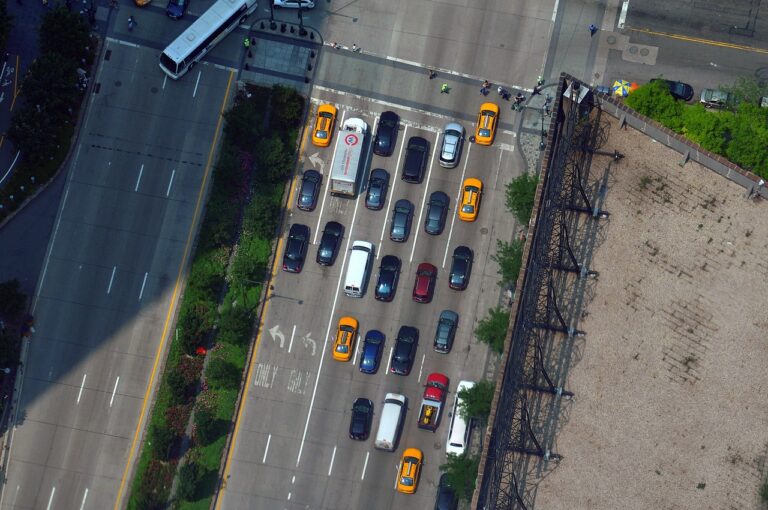The Potential of Self-Driving Cars in Reducing Traffic Congestion
Self-driving cars have the potential to revolutionize the way we approach traffic congestion in urban areas. With advanced technology that allows these vehicles to communicate with each other and the infrastructure, they can optimize traffic flow, reducing bottlenecks and easing congestion on our roadways. By efficiently utilizing space and communicating in real-time, self-driving cars can help minimize the stop-and-go patterns that often lead to gridlock.
Moreover, self-driving cars can enhance safety on the roads by reducing human errors that contribute to accidents and traffic jams. With their ability to react swiftly to changing road conditions and potential hazards, these vehicles can help prevent accidents and keep traffic moving smoothly. By streamlining traffic patterns and enhancing road safety, self-driving cars offer a promising solution to the persistent issue of traffic congestion in our cities.
Challenges of Traffic Congestion in Urban Areas
Traffic congestion in urban areas poses a multitude of challenges for both commuters and city planners. One of the key issues is the significant amount of time wasted sitting in traffic jams, leading to increased stress levels and reduced productivity. Furthermore, congestion contributes to environmental pollution as cars idling in traffic release harmful emissions into the air, impacting air quality and public health.
Another challenge of traffic congestion in urban areas is the strain it puts on infrastructure and resources. Roads and highways become overcrowded, leading to increased wear and tear, higher maintenance costs, and the need for constant upgrades. Additionally, congestion hinders the efficiency of public transportation systems, making it harder for residents to rely on buses or trains as a viable alternative to driving. Addressing these challenges will require innovative solutions and effective urban planning to alleviate the negative impacts of traffic congestion in urban areas.
• Traffic congestion leads to increased stress levels and reduced productivity for commuters
• Cars idling in traffic jams release harmful emissions, contributing to environmental pollution
• Overcrowded roads and highways lead to higher maintenance costs and the need for constant upgrades
• Congestion hinders the efficiency of public transportation systems, making it harder for residents to rely on buses or trains as an alternative option
Benefits of Self-Driving Cars in Reducing Traffic Congestion
One significant advantage of self-driving cars in alleviating traffic congestion is their ability to communicate with each other in real-time. This communication enables these vehicles to coordinate their movements efficiently, preventing bottlenecks and reducing overall congestion on the roads. As a result, the flow of traffic can be optimized, leading to smoother and more streamlined transportation systems.
Additionally, self-driving cars have the potential to significantly reduce accidents and traffic disruptions caused by human error. With advanced sensors and algorithms, these vehicles can react faster and more accurately to potential hazards on the road, ultimately decreasing the likelihood of accidents that can contribute to congestion. By enhancing overall safety and predictability in traffic patterns, self-driving cars play a vital role in improving the overall traffic flow and reducing congestion on busy roadways.
How can self-driving cars help reduce traffic congestion?
Self-driving cars can help reduce traffic congestion by optimizing routes, maintaining safe distances between vehicles, and coordinating with other self-driving cars to improve traffic flow.
Will self-driving cars completely eliminate traffic congestion?
While self-driving cars can significantly reduce traffic congestion, they may not completely eliminate it as there are other factors such as road construction, accidents, and human drivers that can still contribute to congestion.
What are some of the challenges of traffic congestion in urban areas?
Some challenges of traffic congestion in urban areas include increased commute times, air pollution, decreased productivity, and overall frustration for commuters.
How do self-driving cars contribute to a more efficient transportation system?
Self-driving cars contribute to a more efficient transportation system by reducing the number of vehicles on the road, improving traffic flow, and allowing for better coordination between vehicles.
Are there any potential drawbacks to using self-driving cars to reduce traffic congestion?
Some potential drawbacks of using self-driving cars to reduce traffic congestion include concerns about data privacy, cybersecurity risks, and the need for infrastructure updates to accommodate self-driving technology.







